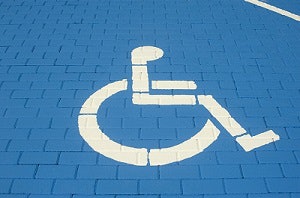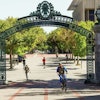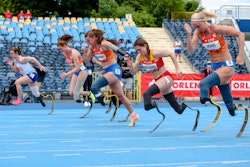As colleges and universities hastily prepare to shift their courses online in response to the coronavirus, some students might welcome the chance to attend class at home in their pajamas. But for blind students, remote courses come with a host of new concerns and questions: Will online course platforms be compatible with their screen-reader technology? Will professors send readings as Word documents, which can be read with screen-reading software, or as scans, that cannot? What if there are images without alt text to explain what’s showing on the screen?
Students with disabilities – and the advocacy organizations that serve them – are bracing themselves for an onslaught of challenges to accessibility. And the Office for Civil Rights (OCR) at the U.S. Department of Education has already flagged this concern. On Tuesday, it released a webinar and fact sheet to help educators prevent discrimination and ensure accessibility to online programs for students with disabilities as more and more schools shift their courses online amid the coronavirus pandemic.
By law, higher education institutions need to be equally accessible to all, under the Americans with Disabilities Act. And the U.S. Department of Justice and Department of Education specifically addressed the importance of accessible educational technology in guidance to college presidents in 2010 and 2011.
“Technological innovations have opened a virtual world of commerce, information, and education to many individuals with disabilities for whom access to the physical world remains challenging,” a joint 2010 letter reads. “Ensuring equal access to emerging technology in university and college classrooms is a means to the goal of full integration and equal educational opportunity for this nation’s students with disabilities.”
But schools will inevitably struggle to live up to their legal requirements as faculty scramble to move their courses off campus, said Chris Danielson, director of public relations at the National Federation of the Blind.
Part of the problem is that many colleges and universities already lack online tools that are fully accessible and lack clear guidelines about what accessibility means. Danielson’s organization often hears from college and university leaders who purchased online learning materials that vendors promised would be accessible, only to find out that they don’t meet blind students’ basic needs.
“With the speed at which things go now and the fact that more and more content is online, the [disability services offices] just can’t keep up with it,” Danielson said. In the wake of the coronavirus, that’s even more true. “But the law doesn’t stop applying because a virus is currently running around our nation. If the university is going to continue to provide education, it has to provide an equal education.”
In the future, he hopes to see legislation that lays out clear accessibility guidelines for online higher education to follow. But as some professors make their first forays into online education, he pointed out there are some simple steps they can take.
For example, Zoom is an easy conference tool for blind students, he said, while homework assignments in the form of Microsoft Word documents and Google Docs can be read by screen-reading technology. The National Federation of the Blind has an online guide that includes other ways to share accessible documents.
But the most important step is “for faculty and staff to be working directly with students with disabilities” to see where unforeseen problems arise, he added.
Kelly Hermann, vice president of accessibility, equity, and inclusion at the University of Phoenix, emphasized that there isn’t enough time to create sweeping accessibility policies during the “triage mode” caused by the current crisis. She recently gave a webinar through the Association on Higher Education and Disability for faculty members in need of accessibility guidance.
Hermann finds that faculty need to be flexible about working with individual students on the accommodations they need. Sometimes, that means creating different assignments with the same educational value for students who can’t access the tools the rest of the class can use.
“Talk with them about what their specific needs are,” she said. “Look at it as an opportunity to think creatively and think outside the box to figure out what can you do for this particular student who’s impacted because we’re not going to be able to put in place a system-wide position in a timely enough manner.”
She also encourages faculty to turn to their campus’s disability services offices when they need help because “we’re used to thinking through how to do things differently for students,” she added. “We know how to modify assignments.
The challenge is keeping faculty, students and disability services informed and in touch as everyone leaves campus.
The University of Maryland may have a good model for making that possible.
For over a month, the school’s Accessibility and Disabilities Service and Division of Information Technology have been working together to create a website called “Keep Teaching” with resources for faculty and students to demystify building and participating in online courses. Each set of resources has an extensive guide on accessibility – how to create accessible online tools and how accommodations for students will play out online.
By and large, students’ biggest concern is how they’re going to receive the classroom accommodations they usually have in person, said Dr. Ana Palla-Kane, senior IT accessibility and UX (user experience) specialist, whether that’s note-taking, extra time for tests or an American Sign Language interpreter.
Collectively, they’ve been reassuring students that they can meet online with Accessibility and Disabilities Service to request individualized supports and those changes will be set up remotely, added Dr. Jo Ann Hutchinson, assistant director of Accessibility and Disability Service.
Still, they know individual accessibility issues will come up, so the university created a central email for feedback when they do, said Dr. Chetan Joshi, director of the counseling center, which houses the university’s disability services.
He advises colleges and universities to create a “seamless, ongoing cycle back and forth of information” between faculty, staff and students with disabilities. “The best thing that one can do in circumstances that are anxiety-provoking is to provide structure and information.”
Sara Weissman can be reached at [email protected].
![Screenshot 2024 06 05 141719[91541]](https://img.diverseeducation.com/files/base/diverse/all/image/2024/06/Screenshot_2024_06_05_141719_91541_.66613a2803b85.png?auto=format%2Ccompress&fit=crop&h=107&q=70&w=160)




![Screenshot 2024 06 05 141719[91541]](https://img.diverseeducation.com/files/base/diverse/all/image/2024/06/Screenshot_2024_06_05_141719_91541_.66613a2803b85.png?auto=format%2Ccompress&fit=crop&h=167&q=70&w=250)













